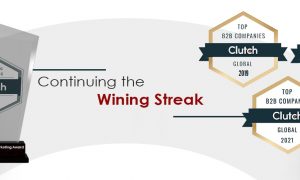Search engine optimization or as we call it “SEO” is often mistaken to be simply the content creation, social media and link building. And if you are one among those then you should definitely continue reading this article, there are multiple opportunities for increasing traffic through link indexing in SEO, firstly by looking inwards rather than outwards. In fact, the biggest area of SEO is to make sure that your website is as accessible as possible to the search engines.
If search engines can’t crawl your website efficiently, then you’re unlikely to rank anywhere within the first page, and sometimes nevertheless even top 10 pages. Even links and social shares will not help you solve this severe accessibility issues so the direct impact would be that your link building efforts will look ineffective and quite frankly be meaningless. link building can be really hard and, trust me that is the last thing you want after wasting tedious man hours generating valuable backlinks, you wouldn’t want to cripple your search engine presence before you even start.
Hence, making your website accessible through link indexing is all that you need to be worried about in the first place. An accessible website means that all its target pages will be indexed and will have the opportunity to rank for your target keywords.
Here are the three main areas of focus in order to fully understand and execute technical SEO:
Crawling
The primary directive here is to make sure that all of our target pages can be crawled by the search engine bots otherwise called as google link index. Also, few websites may have pages that their owners might not want to be crawled that’s the reason we will talk only about targeted pages and how to look for potential problems.
Good site architecture
A good website architecture or navigation is not only good for search engines, it is good for users as well. To be more specific, when you want to make sure that your most important pages are easy to find, ideally within a few clicks of the homepage.
Here are a few reasons as to how this can prove beneficial
It is your homepage that is the most linked to and therefore can flow a lot of PageRank throughout the rest of the site, and not just this. Users will be able to find your key pages quickly – increasing the likelihood of them finding what they want and converting into customers thus reducing bounce rate.
Crawl budget
Google only has a certain level of resources to crawl or to perform link indexing on the ever expanding web hence, they assign a crawl budget to each domain they crawl, this budget is roughly determined by the amount of PageRank a website has. While Google will try to find as much content as they can. Hence, they need to prioritize and be a bit selective so that they can at least make sure that they crawl as much relevant and good content as possible. there isn’t a frequency cap on the number of pages they will index from a single domain, though. Although, if your PageRank is not that high, it may take Google a while to get through everything and find the deeper pages on your website.
Controlling the crawl
One can build more quality links into their website which can help increase PageRank which is also very important. You can also work to optimize your crawl budget by taking a few steps to guide Google into the right direction when their bots to perform google link index:
- Add the rel=”nofollow” tag to links to pages that you do not want crawled
- Make links harder for Google to follow by making them Javascript or AJAX based – be careful here though as you want to still make them clickable for the user and Google is always getting better at crawling these technologies all the time
- Block certain sets of pages in your robots.txt file in order to stop Google from crawling them.
The goal here is not to control PageRank, but to try and control which pages your crawl budget gets used on. It is a waste if Google is using all of its crawl budgets on pages that you don’t care about. It is rather useful if the time is spent crawling the pages that you want to rank well and that may be updated more often. Another advantage is that the PageRank does flow to your important pages and pages that you want to rank well. However, this should be achieved through a good website architecture.
Indexing
Now that the search engines are crawling your website correctly, it is time to monitor how your pages are actually experiencing link indexing in SEO and actively monitor for problems by the search engines.
Caching
The easiest way to check that Google is indexing a page correctly is to check the cached version and compare it to the actual version. There are three ways you can do this quickly.
- Run a Google search
- Click through from Google search results
- Use a bookmarklet
The goals of checking the page cache here are:
- To check that a page is being cached regularly
- To checking that the cache contains all your content
If these requirements are met, then you can know that a certain page is being crawled and indexed correctly.
Sitemap segmentation
The purpose and use of XML sitemaps is to summarize how google bots should index a website, the idea is that by creating several sitemaps for different parts of your website, you can monitor indexation using Google Webmaster Tools
Index status
A nice feature of Google Webmaster Tools is to identify index status. This gives some insight on how Google is crawling and indexing your website at the same time giving you an idea of how many pages Google has choosing not to index.
For a website in which the administrator is constantly adding new pages to their website, seeing a steady and gradual increase in the pages indexed means that they are being crawled and indexed correctly. On the other side, if you see a big drop (which isn’t expected) then it may indicate problems and that the search engine bots are unable to access your website correctly.
Ranking
The whole reason we are going through these tasks is ultimate to get our pages ranking higher than they already are, Hence here’s what you need to do. Find out how many pages you are trying to get traffic to. This will most probably be your homepage, categories, products, and content pages. There are also a few other ways you can do this, depending on your website’s setup
- Look at the number of URLs in your sitemap (relies on sitemaps being updated and accurate)
- Speak to your developers who should be able to give you a rough idea on this matter
- You could also crawl your website but this relies on all pages being accessible in the first place hence follow the steps in “cashing”
Once you have this number, you need to check how many of these pages are getting organic traffic. You can do this using Google Analytics. If this number is significantly lower than the number of pages you actually have, then you’re probably losing out on a lot of potential traffic. Hope we have made this simpler for you and everyone organization should be more aware of technical SEO, and for some reason, you are not moving in the right direction, then as always, we are here to help.




